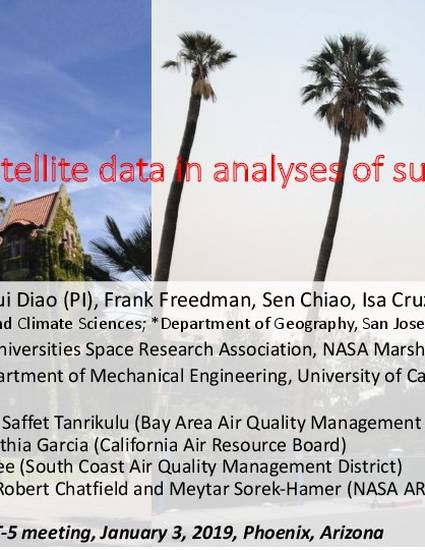
Presentation
Applications of satellite data in analyses of surface PM2.5
NASA Health and Air Quality Applied Scienes Team Meeting
(2019)
Abstract
Fine particulate is among the most harmful air pollutants for human health. There is ongoing interest in developing reliable methods to estimate PM2.5 concentrations 1) at unmonitored locations and 2) at finer horizontal resolution for improved health risk assessment and public health tracking.
We aim to develop an efficient system that can reliably estimate PM2.5 at unmonitored locations and at finer horizontal resolution at important locations.
• MODIS aerosol optical depth (AOD) provides an input for particulate levels at unmonitored locations in methods used to construct regional PM2.5 fields.
• Dispersion model fields can be fused into portions of these regional fields for increased horizontal resolution where high PM gradients can be anticipated, for example near major roadways.
Disciplines
Publication Date
January 3, 2019
Location
Phoenix, AZ
Citation Information
Minghui Diao, Frank R. Freedman, Sen Chiao, Isa Cruz, et al.. "Applications of satellite data in analyses of surface PM2.5" NASA Health and Air Quality Applied Scienes Team Meeting (2019) Available at: http://works.bepress.com/minghui-diao/47/
